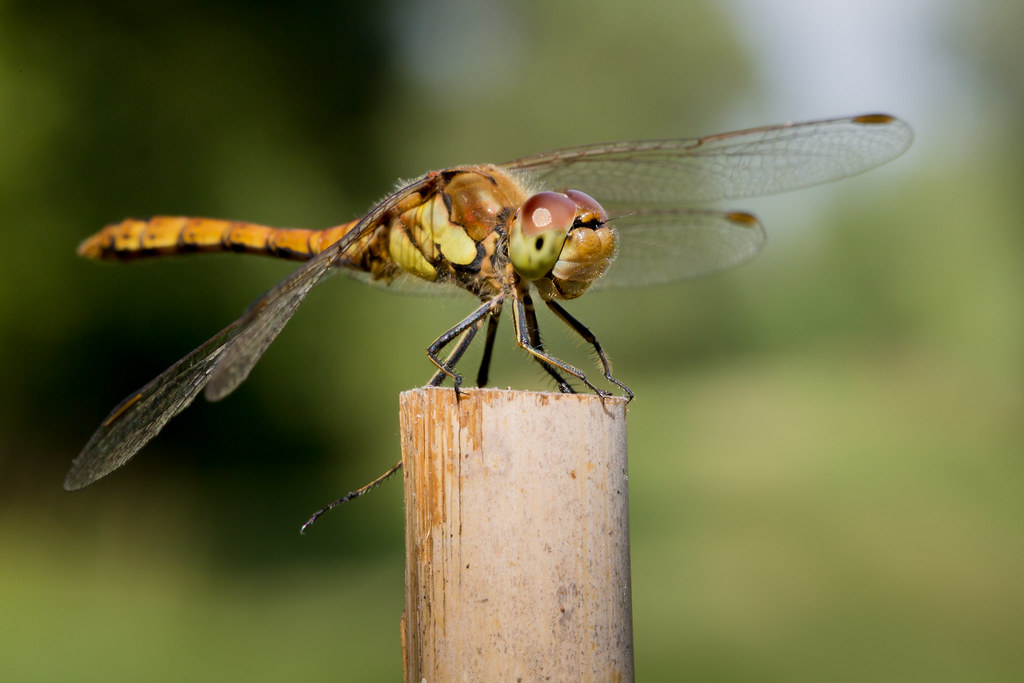D
Deleted member 34016
Guest
@Lez325 - it's a Ruddy Darter. Check out the legs. They are all black on the Ruddy and black with a pale stripe on the Common.
Thank you Mark
@Lez325 - it's a Ruddy Darter. Check out the legs. They are all black on the Ruddy and black with a pale stripe on the Common.
Nice shots Bill, love the Violet Dropwing.
I think the Damselfly is a White-legged Damselfly female (Platycnemis pennipes)

Maybe bill will rent you a room.Looks like they still have away to gobefore they get to the UK. Seriously thinking about travelling South next year to see them.


Looks like they still have away to gobefore they get to the UK. Seriously thinking about travelling South next year to see them.
Bill..Absolutely wonderful images. I had no idea that dragonflies had such a variety of stunning colours.. You really get close and personal with them..Lol.
I did have a go with dragonflies once but we get too many windy,breezy days and overcast skies but I bet you don't have such problems when in France.
Just an afterthought. We're off to Brittany in August for three days staying with friends and my wife is in training mode to do a charity run there with a friend and she said she will run round the lake.Seems there's a large lake there so I'll take an appropriate lens. I have the Canon 180mm f3.5 but it's too much to take with the 17-40 for the Milky Way..there's no light pollution where they live. Then the 100-400 for the buzzards I'm told sit on the telephone poles and don't bother to fly away when approached as their cousins do in Cornwall (our holiday destination twice a year)..lol. so.. I'll take my Canon 70-200 f4..it's very light. We're flying to Dijon (I think..I'm sure it's Dijon) so no car.


Bill..Absolutely wonderful images. I had no idea that dragonflies had such a variety of stunning colours.. You really get close and personal with them..Lol.
I did have a go with dragonflies once but we get too many windy,breezy days and overcast skies but I bet you don't have such problems when in France.
Just an afterthought. We're off to Brittany in August for three days staying with friends and my wife is in training mode to do a charity run there with a friend and she said she will run round the lake.Seems there's a large lake there so I'll take an appropriate lens. I have the Canon 180mm f3.5 but it's too much to take with the 17-40 for the Milky Way..there's no light pollution where they live. Then the 100-400 for the buzzards I'm told sit on the telephone poles and don't bother to fly away when approached as their cousins do in Cornwall (our holiday destination twice a year)..lol. so.. I'll take my Canon 70-200 f4..it's very light. We're flying to Dijon (I think..I'm sure it's Dijon) so no car.


 Small red-eyed Damselflies mating by Mark Tyrrell, on Flickr
Small red-eyed Damselflies mating by Mark Tyrrell, on Flickr Small Red-eyed Damselflies by Mark Tyrrell, on Flickr
Small Red-eyed Damselflies by Mark Tyrrell, on Flickr Small red-eyed Damselflies mating by Mark Tyrrell, on Flickr
Small red-eyed Damselflies mating by Mark Tyrrell, on Flickr Small Red-eyed Damselflies by Mark Tyrrell, on Flickr
Small Red-eyed Damselflies by Mark Tyrrell, on Flickr

 DSC_8671 by Mike D, on Flickr
DSC_8671 by Mike D, on Flickr@Bill, I think your blue and orange form white legged damselflies are male and female of the same species.
Small red-eyed damselflies have taken off at Westhay Moor in Somerset. Fewer there this year than last but still quite plentiful at this time of year. Here's one I snapped yesterday.
DSC_8671 by Mike D, on Flickr
 Dragonfly by Paul Jeffries, on Flickr[/URL]
Dragonfly by Paul Jeffries, on Flickr[/URL]Thanks for the info, what is the difference between male and female?Nice catch. It's a male brown hawker.

Nice shot. The image is sharp enough to take the crop and still look good for web display. And it has the advantage that you have a greater depth of focus than you would have done had you got closer. You're right that it's a common darter. I can't see a spur on the underside of the lower abdomen that would denote a female so I'm guessing it's an immature male. The fact that it continually returned to the same spot would back that up as males are more territorial than females.
 Dragonfly silhouette by Kevin Clark, on Flickr
Dragonfly silhouette by Kevin Clark, on Flickr Resting by Kevin Clark, on Flickr
Resting by Kevin Clark, on Flickr Ready for lift off by Kevin Clark, on Flickr
Ready for lift off by Kevin Clark, on Flickr Unknown Dragon 2 by Les Moxon, on Flickr
Unknown Dragon 2 by Les Moxon, on Flickr Norfolk Hawker by Vince Cowell, on Flickr
Norfolk Hawker by Vince Cowell, on FlickrIt's an immature male Common Darter - you can just see the red appearing on his abdomen.Unknown on my Pond today- quite small about the size of a common Darter- any ID would be great
Sony a77 Mk2 and Sigma 105mm f2.8 Macro lens
Unknown Dragon 2 by Les Moxon, on Flickr
Les
It's an immature male Common Darter - you can just see the red appearing on his abdomen.
